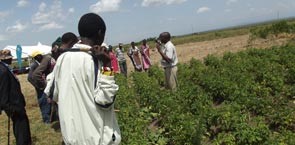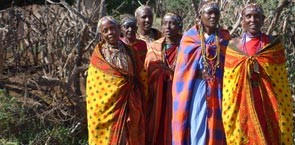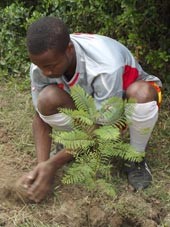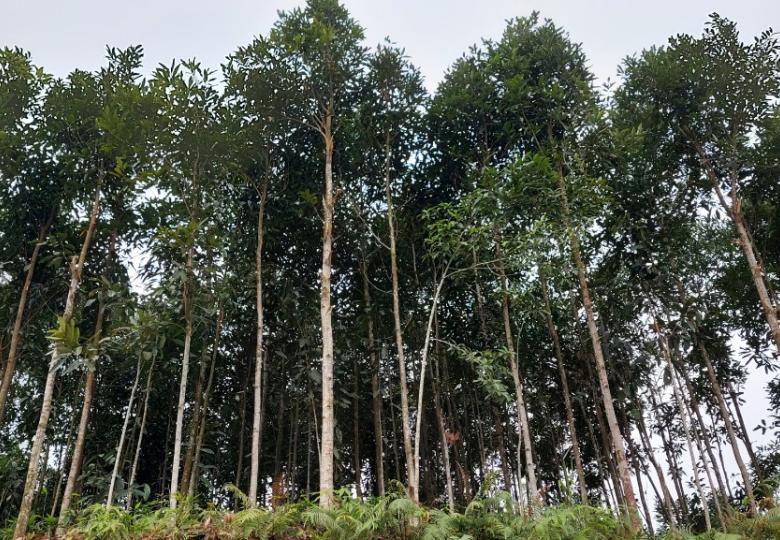Improving Livelihoods and Fighting Climate Change in Kenya
The cornerstones of this project were to raise the livelihoods of marginalised communities and, at the same time, contribute to the stabilisation of greenhouse gas emissions on a global scale.
Project objective
The project, which took place in the Laikipia County in Kenya, had two main objectives. First, the project aimed at improving the livelihoods of marginalised communities who lived in areas that are highly vulnerable to climate change. Secondly, the project aimed at sequestering significant amounts of carbon as a contribution to stabilising global greenhouse gas emissions.
In close collaboration with our local project partner Zeitz Foundation, this project supported and enabled people to adapt to climate change through improvements in farmland production systems. Conservation of agriculture, sustainable use of rainwater and human wildlife conflict mitigation were some of the processes involved in the project.
“This project combines social and ecological aspects in a powerful way. It will also have significant carbon sequestration benefits. We are excited to work together with Zeitz Foundation on this project and to witness the benefits delivered to the local community and ecosystems” said Hando Hain, Programme Director in Preferred by Nature (formerly known as NEPCon).
Improvement in the livelihoods of people in marginalised communities is being achieved through the introduction and scaling up of resilient and eco-friendly farming systems, along with an introduction of sustainable marketing and supply chains. Carbon sequestration is also being carried out by these farming systems and through ecological restoration in both commercial and community conservancies.

Expected results and impact
In the work towards improving the living standard for the residents in Laikipia, where 55% live below the poverty level, the project aimed at securing an annual harvesting of 1,000,000 litres of rainwater. This, together with a focus on less water intensive crops and varieties, and the scaling up of water efficient technologies, ensuring that farming systems become more resilient. Moreover, leading to enhanced food security, thus helping to secure livelihoods.
The ecological restoration of degraded wild lands will result in conserving more soil and water and stabilising river flows. This, together with innovations for mitigating human-wildlife conflict, will sustain functioning ecosystems. It will also help to sustain the unique and often endangered biodiversity that make the foundation for the nature-based tourism that the area is famous for - an important economic pillar for the County.
The diversified economic base will reduce local peoples’ reliance on exploitative use of natural resources, thus allowing the creation of water and nutrient reserves as elements of food security in cases of years with low rainfall and low agricultural productivity.
The project also seeked to enhance the supply of forest products and reforestation through the introduction of live terracing and enrichment planting. Through an extensive reforestation effort and improvement of the rangeland management, approximately 1,323,000 acres of wild lands are being ecologically enhanced.

Estimated project impact in figures
- 6,000 schoolchildren will benefit from enhanced nutrition and availability of clean water at schools
- 4,000 households (24,000 people) will benefit from 50-100% increase in their farm income during the life of the project. 20,000 additional households (120,000 people) will be exposed to and adopt aspects that will enhance their income from farming a improve their access to clean and reliable water sources
- 200 permanent farm jobs will be created + 2,000 workdays of casual labour. Additionally, hundreds more may benefit from ‘spin-off’ commercial activities such as honey production, resulting from the introduction of beehives as wildlife deterrent
- 160 people will be trained in construction and maintenance of RWH systems resulting in semi-permanent jobs and a similar number in HWC technologies
- Improvement in skills will enhance the quality of employment and remuneration of project staff and the 26 trainers

Success story
Click here for the photo essay

Developing nature-friendly solutions to protect forests against climate change whilst maintaini...
The eco2adapt project is about finding eco-friendly ways to protect our forests in Europe and China. It aims to ensure we pla...

Revitalising the Silam Coast Conservation Area for a sustainable future
The Silam Coast Conservation Area (SCCA) Restoration Project is an eight-year collaborative initiative between Preferred by Nature...

Sustainable Management of Small Forest Properties for Resilient Forests in Europe (SMURF)
Europe's forests, crucial for their ecological and economic value, face mounting threats. Climate change fuels extreme weather eve...

Strengthening forest management practices in Vietnam for improved livelihoods and economic deve...
Forests are important in the global carbon cycle, carbon sequestration and storage. Although Vietnam increases in overall forest c...
